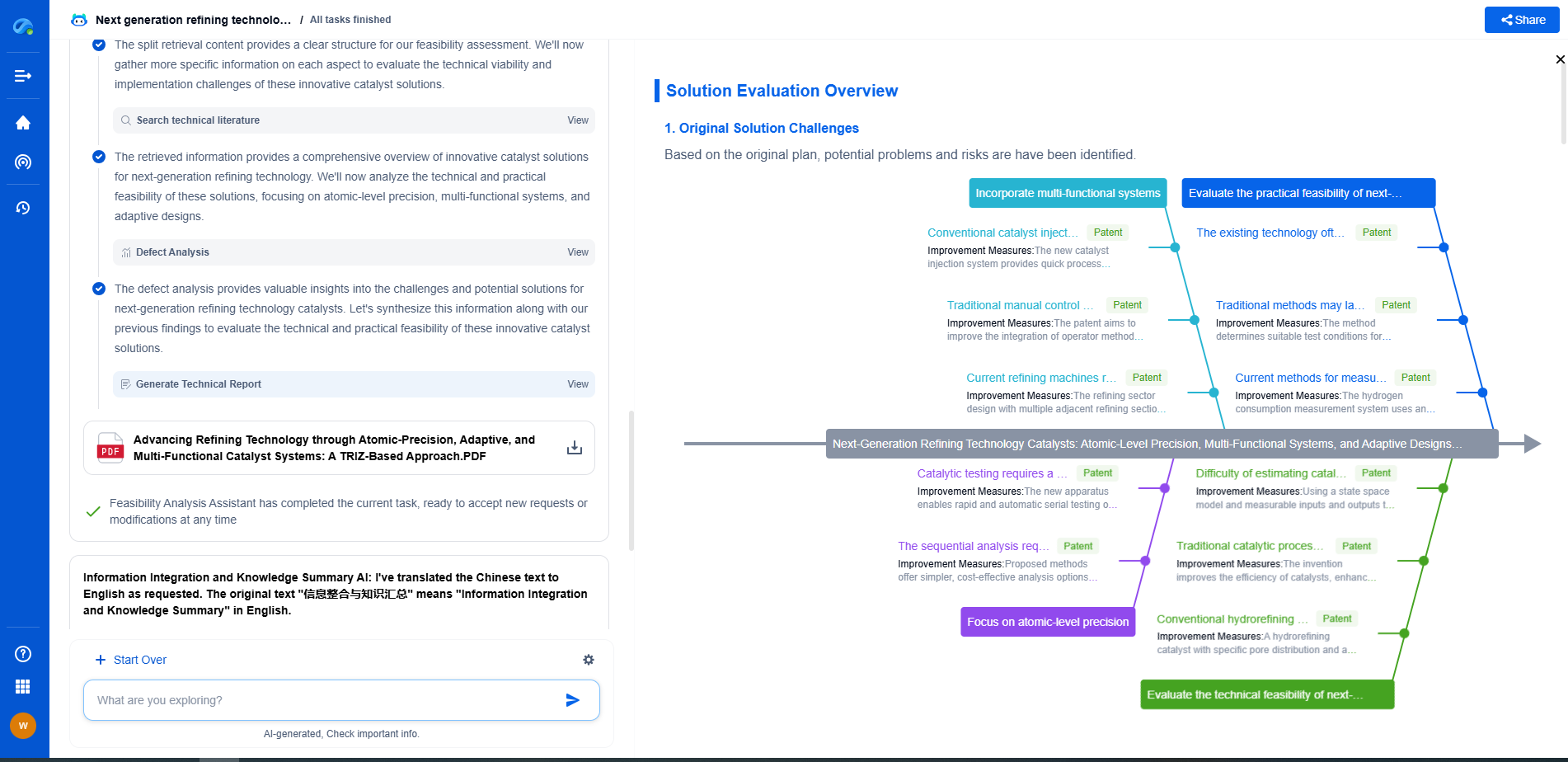True RMS vs. Average-Responding Meters: Accuracy in Distorted Waveforms
JUL 9, 2025 |
In the realm of electrical measurements, especially when dealing with alternating current (AC) in various devices and systems, understanding the nuances between different types of meters is crucial. Two common types of meters are True RMS (Root Mean Square) meters and average-responding meters. Both are designed to measure AC voltage or current, but they differ significantly in their approach and accuracy, particularly when measuring non-sinusoidal or distorted waveforms.
The Basics of RMS and Average-Responding Measurements
To appreciate the differences between True RMS and average-responding meters, it's essential first to understand what RMS really means. RMS is a statistical measure of the magnitude of a varying quantity and is particularly useful in AC because it provides a measure of the equivalent DC value that would produce the same power dissipation in a resistive load.
Average-responding meters, on the other hand, calculate the average of the absolute values of the waveform and then scale this value to estimate the RMS. This approach works well for pure sinusoidal waveforms, as the average value is proportional to the RMS value by a constant factor. However, problems arise when the waveform deviates from a perfect sine wave.
Impact of Distorted Waveforms on Measurement Accuracy
Many practical systems involve waveforms that are not purely sinusoidal. These distortions can arise from various sources, such as harmonics generated by non-linear loads, switching devices, or other electronic components. When dealing with such waveforms, the accuracy of average-responding meters can fall short.
Average-responding meters assume a pure sine wave, so when the waveform is distorted, these meters can provide inaccurate readings. The deviation can lead to underestimating or overestimating the true power, depending on the waveform's shape. For instance, with a waveform rich in harmonics, an average-responding meter might not account for the additional power these harmonics can contribute.
True RMS meters, by contrast, measure the true root mean square value of the waveform, regardless of its shape. They do this by sampling the waveform repeatedly over a period and calculating the square root of the average of the squares of the instantaneous values. This method ensures accurate readings even in the presence of significant waveform distortions, making True RMS meters indispensable in modern electrical testing.
Applications and Implications
The choice between True RMS and average-responding meters has real-world implications. In industrial applications, where systems often incorporate non-linear loads like variable frequency drives, computers, or LED lighting, relying on average-responding meters can lead to critical errors. Such inaccuracies can affect the efficiency and safety of electrical systems, leading to improper system design, increased energy costs, or even equipment failure.
True RMS meters, while generally more expensive, provide the necessary accuracy required for critical measurements in such applications. They are the preferred choice for engineers and technicians who need to ensure that electrical systems operate efficiently and safely under all conditions.
Conclusion
When dealing with distorted waveforms, understanding the differences between True RMS and average-responding meters is crucial for accurate electrical measurements. While average-responding meters may suffice for purely sinusoidal signals, their limitations become apparent in more complex scenarios involving waveform distortions. True RMS meters offer a more reliable solution, ensuring precision and safety in a wide range of applications. As technology continues to advance and systems grow more complex, the benefits of True RMS measurement become increasingly vital.
Navigating the evolving world of electrical measurement—from high-precision signal integrity to advanced test protocols like BERT or TDR—demands more than just expertise; it demands smart tools.
Patsnap Eureka empowers you to keep up—by turning complex patent data, technical parameters, and industry signals into actionable insight. It’s your AI partner for exploring what’s next in test, measurement, and electrical diagnostics.
💡 Try Patsnap Eureka for free and see how it transforms the way you work with electrical measurement technologies.
- R&D
- Intellectual Property
- Life Sciences
- Materials
- Tech Scout
- Unparalleled Data Quality
- Higher Quality Content
- 60% Fewer Hallucinations
Browse by: Latest US Patents, China's latest patents, Technical Efficacy Thesaurus, Application Domain, Technology Topic, Popular Technical Reports.
© 2025 PatSnap. All rights reserved.Legal|Privacy policy|Modern Slavery Act Transparency Statement|Sitemap|About US| Contact US: help@patsnap.com

